Klementinum
On the other side of Karlova Street lies the Klementinum, the second largest building complex in the capital after Prague Castle spanning an area of 20.000 square meters. The enormous complex of Klementinum had its first segment placed on the map of the city in the 11th century with the Romanesque chapel of St. Clement.
In 1232 the friars of the Dominican Order erect their monastery next to the chapel. More than 300 years would pass until in 1556 Emperor Ferdinand invited the Jesuits to Prague to strengthen the Roman Catholic faith in the city.
The Jesuits chose the site of the Dominican abbey for their ambitious project and the original buildings were torn down to make way for their first building, the Church of the Holy Savior (Kostel Nejsvetejsího Salvátora) (Its western facade faces Charles Bridge). The works for the Early Baroque monument started in 1578. The wealthy Jesuits gradually bought the whole neighborhood consisting of about 30 houses, gardens, and churches.
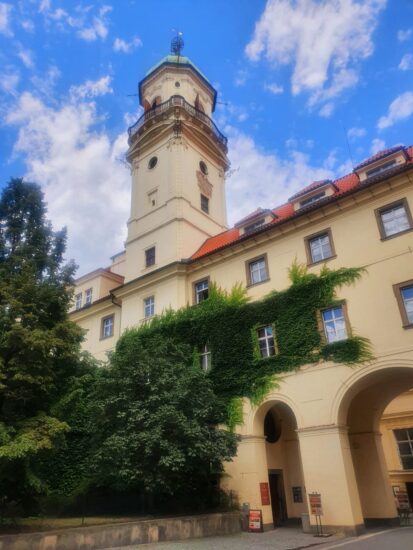
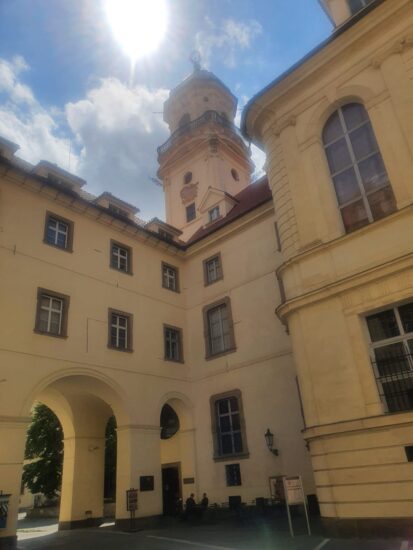
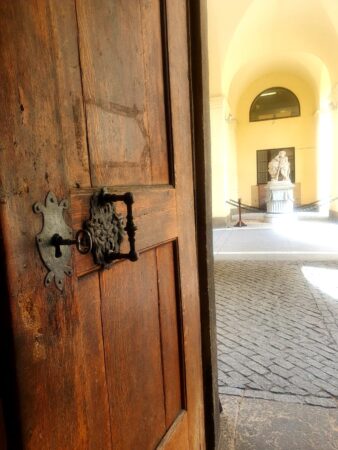
The Jesuit “takeover” was disrupted by the rebelled Protestant Estates who expelled the Order from the city, only to re-commence two years later, after the Battle of White Mountain and the re-establishment of Catholic rule by the Habsburgs. Prague’s education system was placed under Jesuit control, the school run by the Jesuits was promoted to a university. The order started building its college (1653) to make it the spiritual center of the city.
The construction would last over 170 years with many prominent architects involved in the design of the building, that in its greatest extent is a prime example of the Baroque style. Classrooms, bedrooms for the community, a library that would evolve into one of the most (if not The most) spectacular in the world.
A chapel of unbelievable beauty, an astronomical tower, a print room, a pharmacy, and a theater started taking up the 2 hectares bought by the order by the mid-1700s.
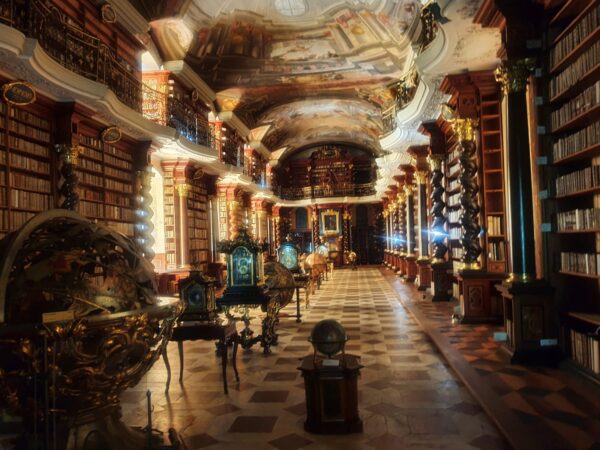
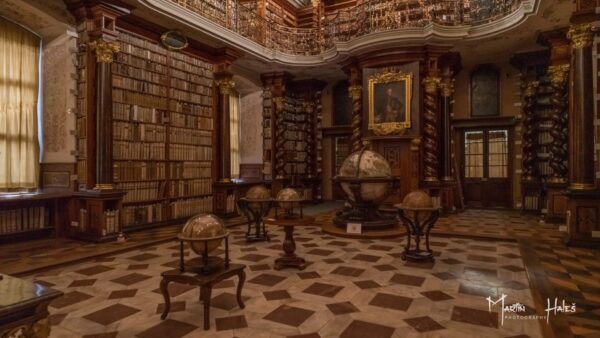
Klementinum was merged with the legendary Charles University absorbing a great part of its library collection that would serve its newly established philosophical and theological faculties. The Jesuits had to leave Klementinum after the order was disestablished in 1773. The university however was not dissolved.
After the division of the university into Czech and German parts in 1882, only the Czech part stayed. In 1930, the philosophical faculty moved into a new building and Klementinum became the seat of the National Library. In its long history scientists, astronomers, philosophers, and musicians have studied and worked here. Thousands of tourists have marveled at its ceiling frescoes and its gilded stucco interiors.
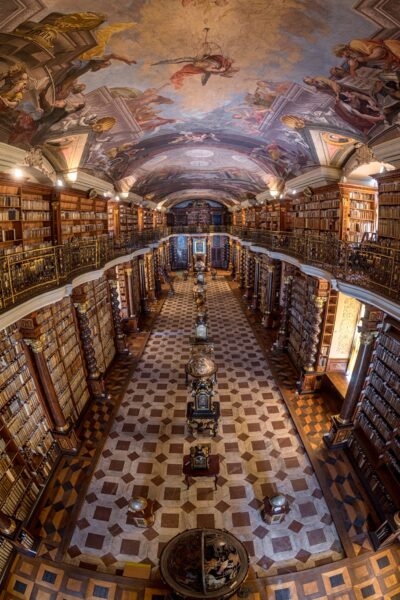
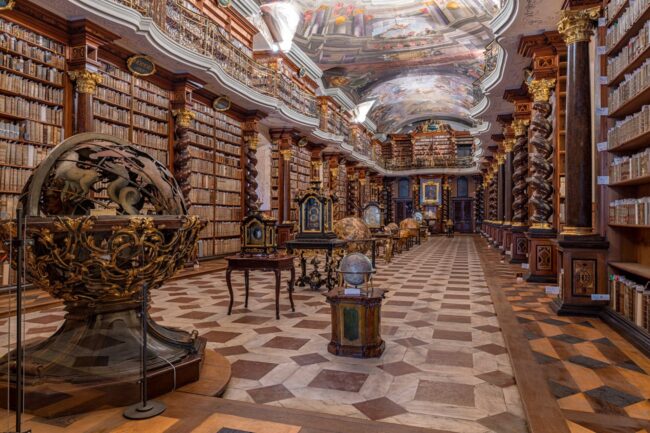
Today the buildings that are still open to the public are without question enough for anyone to visit. The place will forever stand at the pinnacle of their sightseeing experiences.
The Baroque masterpiece of the Library Hall, with more than 20.000 rare books that go back to the 16th century, the magnificent ceiling frescoes, the 18th-century globes, the masterfully carved wooden bookcases will leave you with your mouth open.
The amazing Mirror Chapel with its 18th-century organs played by Mozart himself is not included in the normal guided tour but you can book a seat in one of the concerts held there regularly. A climb up to the Astronomical tower and the two beautiful churches of St. Salvator and St. Clement’s are the cherries on top.



